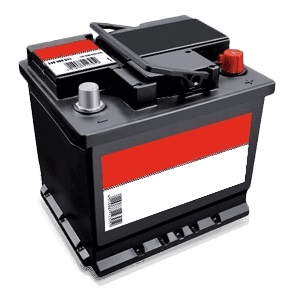Collaborating Post
Car batteries: the power source of your car
Published : 11 Sep 2024, 21:10
Updated : 11 Sep 2024, 21:20
The battery is the heart of any car, providing electricity for all systems, from starting the engine to running the headlights and stereo. Understanding how it works and what types exist will help you make the right choice and avoid unpleasant surprises on the road.Car battery is not just a part, it is the basis, without which your car will turn into a useless pile of metal. Let's understand why the battery is so important and how it ensures the operation of all systems of your iron horse. The battery is the impulse that brings the engine to life. Without it, you simply cannot start your car. This is especially true in the cold season, when the load on the battery increases. Modern cars are packed with electronics: headlights, windshield wipers, audio system, navigation, security systems and much more. All of these are powered by the battery when the engine is off or idling. The battery smooths out voltage spikes in the on-board network, ensuring that all electronic components operate consistently. This prevents malfunctions and damage to sensitive electronics. Imagine being stuck in a traffic jam or stranded far from civilization. The battery will allow you to use lights, emergency alarms, and other necessary functions while you wait for help. In today's vehicles with this system, the battery plays a key role, providing multiple engine starts without unnecessary fuel consumption or emissions.
Types of car batteries
|
|
|
Absorbed electrolyte batteries (AGM) |
|
|
Batteries with gel electrolyte (GEL) |
|
|
EFB batteries (Enhanced Flooded Battery) |
|
How to choose a battery
When choosing a battery, consider:
-
Vehicle make and model: Each vehicle has different battery requirements.
-
Capacity: Measured in ampere hours (Ah). The higher the capacity, the longer the battery will be able to power electronics with the engine off.
-
Starting Current: Measured in amperes (A). Indicates the battery's ability to start the engine, especially in cold weather.
-
Battery Type: Choose the type appropriate for your vehicle and driving style.
-
Warranty: Please note the warranty period provided by the manufacturer.
A battery charger is not just an accessory for your car, it is a tool that can extend the life of your battery and save you in an emergency. But how do you choose the right charger among the many options on the market? Let's get to the bottom of it.
Main selection criteria:
Battery type: Lead-acid, AGM, GEL, EFB: Make sure the charger is compatible with your battery type. Some models are only designed for certain types, while others are universal, such as starter battery Nissan Qashqai as in the picture on the website autodoc.fi.
Battery capacity: Ampere hours (Ah): Choose a charger with an appropriate range of charging current. It is generally recommended that the charging current be 10-20% of the battery capacity. For example, for a 60 Ah battery, a charger with a current range of 6-12 Ah would be suitable.
Functionality:
-
Automatic mode: The device itself detects the battery charge level and regulates the current, preventing overcharging.
-
Manual mode: Allows you to set the charging current yourself, which can be useful for advanced users.
-
Recovery function: Helps recover sulfated batteries, extending their life.
-
Maintain Charge Function: Keeps the battery in a charged state during long-term storage.
-
Short circuit and polarity protection: Provides safety during use.
Additional factors:
-
Size and weight: If you plan to transport the charger frequently, consider its compactness and weight.
-
Price: Charger prices can vary greatly. Determine your budget and choose the model with the best value for money.
-
Brand and reviews: Prefer well-known manufacturers with a good reputation. Read reviews from other users to know the real life experience.
Recommendations: An automatic charger with a trickle charge function is the best choice. For vehicles with a stop-start system: Select a charger that is compatible with AGM or EFB batteries, also you can find more information about battery charger from AUTODOC.
For old or severely discharged batteries: A device with a recovery function can help bring your battery back to life.
Battery care tips:
Check the electrolyte level regularly (for lead-acid batteries). Keep terminals and connections clean. Avoid deep battery discharges. In cold weather, store your car in a warm garage. Proper selection and care of the battery will ensure reliable engine starting and uninterrupted operation of your car's electronics. A car battery is not just a part, it is the source of life for your car. It ensures engine starting, power supply for electronics, stability and safety in unforeseen situations. Take care of your undefined battery, maintain and replace it promptly, and it will provide you with reliable operation for many years!


